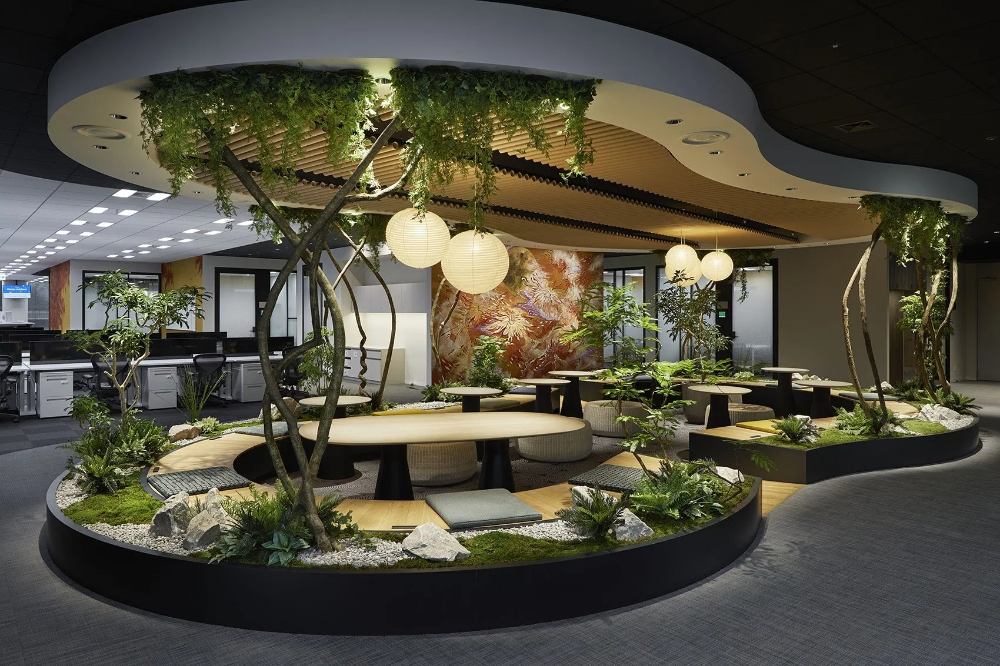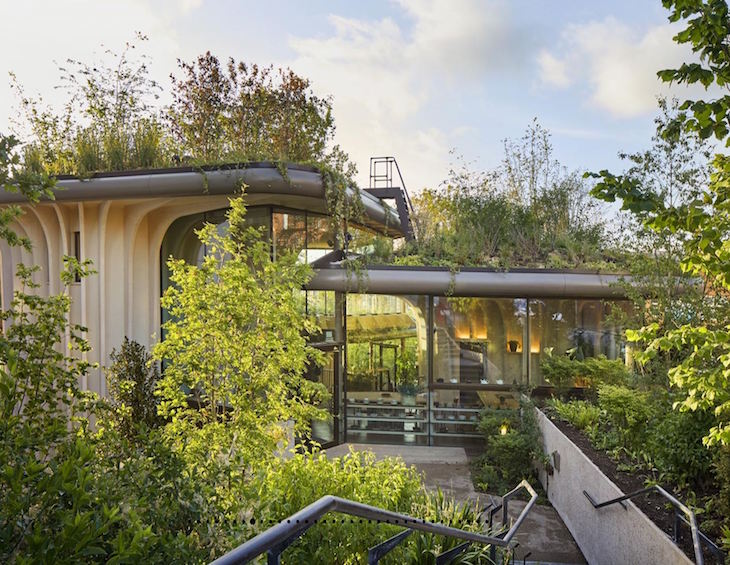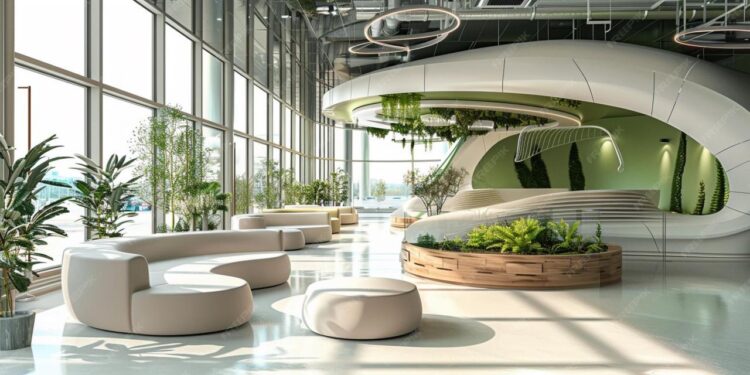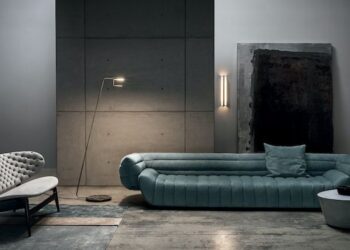Biophilic Design: A Wellness Revolution
In the fast-paced, digital world we inhabit, a subtle but profound shift is occurring in how we design our living and working spaces. The concrete jungles of modern cities, once celebrated as pinnacles of progress, are increasingly being recognized for their negative impact on human health and well-being. A groundbreaking solution is emerging from an age-old connection: our innate affinity for nature. This concept is at the heart of biophilic design, a revolutionary approach that seeks to integrate natural elements into our built environments. This isn’t just about adding a few potted plants; it’s a deep, intentional philosophy that aims to restore our bond with the natural world, leading to a cascade of benefits for our physical and mental health.
The term “biophilia,” coined by social psychologist Erich Fromm and later popularized by biologist E.O. Wilson, describes the human instinct to connect with nature and other living systems. Biophilic design applies this principle to architecture and interior design, transforming sterile, artificial spaces into environments that nurture and rejuvenate. The underlying premise is simple yet powerful: by bringing nature indoors, we can significantly reduce stress, enhance creativity, and improve overall well-being. This comprehensive guide will explore the core principles, profound benefits, and practical applications of biophilic design, revealing why it’s not just a trend but a fundamental necessity for the future of human-centric architecture.
I. Understanding the Core Principles of Biophilic Design
Biophilic design is a multifaceted discipline, far more intricate than simply adding greenery to a room. It operates on a series of principles and patterns that seek to replicate the sensory experience of being in nature. These principles can be broken down into a few key areas that work together to create a truly immersive biophilic environment.
A. Direct Connection to Nature: This is the most straightforward aspect of biophilic design and involves the direct presence of natural elements within a space. This includes:
- Plant Life: Incorporating a variety of indoor plants, from small desk succulents to large-scale living walls. Plants not only purify the air but also introduce color, texture, and life into a room, fostering a sense of vitality and growth.
- Water Features: The sight and sound of moving water, from a small fountain to a large indoor stream, have a calming effect. The sound of trickling water can mask distracting noises and create a serene atmosphere.
- Natural Light: Maximizing access to natural light is crucial. Design strategies include large windows, skylights, and even light shelves that reflect daylight deep into a building. Natural light regulates our circadian rhythm, improving sleep and mood.
B. Indirect Connection to Nature: This principle involves using elements that evoke or symbolize nature without being a living element themselves.
- Natural Materials: Using materials like wood, stone, and bamboo provides a tactile and visual connection to the natural world. These materials have a warmth and authenticity that synthetic materials lack.
- Colors and Patterns: Incorporating a color palette inspired by nature—think earthy tones, sky blues, and forest greens—can psychologically link a space to the outdoors. Using patterns that mimic natural forms, such as the fractal patterns found in ferns or seashells, can also be highly effective.
- Views of Nature: Providing a clear, unobstructed view of the outdoors, whether it’s a garden, a park, or a distant landscape, is a powerful tool. This visual connection helps to reduce eye strain and provides a sense of spaciousness.
C. Place-Based Relationships: This principle emphasizes creating a sense of place and belonging by incorporating local and cultural natural elements. For example, using local stone or wood in a building connects it to its geographical context and history. This approach makes the design feel authentic and unique, fostering a deeper sense of identity for the occupants.
II. The Scientific Evidence: How Biophilic Design Impacts Wellness
The benefits of biophilic design aren’t just anecdotal; they are backed by a growing body of scientific research from fields as diverse as psychology, neurology, and environmental science. These studies consistently demonstrate that exposure to nature, even in a simulated form, has a tangible positive effect on human health and performance.
A. Cognitive Function and Creativity: Studies have shown that exposure to natural elements can significantly improve cognitive function. A space with natural light and a view of greenery can lead to increased concentration and productivity. In a famous study, employees in offices with natural elements performed better on cognitive tasks and reported higher job satisfaction. The theory is that nature provides a gentle distraction that allows the mind to rest and recharge, much like taking a short mental break, which in turn enhances focus and creativity.
B. Stress Reduction and Mental Health: One of the most profound benefits of biophilic design is its ability to reduce stress. A natural environment can lower cortisol levels, the body’s primary stress hormone, and reduce blood pressure. The sound of water, the sight of plants, and the presence of natural light can create a sense of calm and safety, mitigating the anxiety often associated with high-pressure work or urban living. This can lead to a significant reduction in burnout and improved mental clarity.
C. Physical Health and Healing: Beyond mental well-being, biophilic design has been shown to have a positive impact on physical health. Hospital patients with a view of nature have been found to recover faster, require less pain medication, and have shorter hospital stays. This is because a calming environment reduces the physiological stress response, allowing the body to dedicate more energy to healing. Furthermore, plants act as natural air purifiers, removing toxins and improving air quality, which can reduce respiratory issues and allergies.
 III. Practical Applications: From Offices to Homes and Beyond
III. Practical Applications: From Offices to Homes and Beyond
The beauty of biophilic design is its versatility. It can be applied on a small scale in a residential setting or on a grand scale in a commercial building. The following examples highlight its diverse applications.
A. The Modern Office: Forward-thinking companies are now integrating biophilic design into their workplaces to boost employee morale and productivity. This includes installing living walls in lobbies, placing large planters in open-plan offices, and designing break rooms with direct access to an outdoor terrace or garden. The result is a more vibrant and engaging work environment that fosters collaboration and well-being.
B. Residential Homes: Homeowners are embracing biophilic principles to create personal sanctuaries. This can be as simple as adding a few houseplants and choosing natural wood furniture. More advanced applications include designing a home with a central courtyard, a rooftop garden, or large windows that blur the line between indoor and outdoor spaces. . Even a small apartment can benefit from a vertical herb garden or a carefully curated collection of plants.
C. Healthcare Facilities: Hospitals, clinics, and long-term care facilities are increasingly adopting biophilic design to aid in patient recovery. This includes designing patient rooms with views of nature, creating therapeutic gardens, and using natural materials in waiting areas to reduce patient and family anxiety. The goal is to create a healing environment that supports both the physical and emotional needs of the patients.
D. Educational Institutions: Schools and universities are using biophilic design to create more effective learning environments. Studies show that students in classrooms with natural light and views of nature are more engaged and perform better academically. Designing schools with outdoor learning spaces, green roofs, and large windows can reduce stress and improve concentration for both students and teachers.
IV. Implementing Biophilic Design: A Step-by-Step Guide
For those looking to integrate biophilic principles into their own spaces, a structured approach is essential. It’s not about a single purchase but a holistic strategy that considers all aspects of a room.
A. Assess the Existing Space: Start by evaluating the current environment. What is the quality of natural light? Are there any existing connections to the outdoors? Is the air quality good? This initial assessment will help identify areas for improvement and guide your design choices.
B. Prioritize Natural Light and Ventilation: This should be your first and most important step. Maximizing natural light is the single most effective way to incorporate biophilia. Remove heavy curtains, clean windows, and consider adding mirrors to reflect light. Ensure the space has good air circulation, perhaps by using natural ventilation or air purifiers.
C. Introduce Plant Life Strategically: Don’t just add a plant; think about its role in the room. A large focal plant can anchor a corner, while a collection of small plants on a shelf can add texture. Consider a variety of plants with different leaf shapes and colors to create visual interest. For larger projects, a professional can help design a full-scale living wall or indoor garden.
D. Incorporate Natural Materials and Textures: Start by swapping out synthetic materials for natural ones. Choose wooden furniture, a stone accent wall, or a jute rug. The tactile experience of these materials adds a layer of depth and comfort to the space. Look for textiles made from natural fibers like cotton, linen, and wool.
E. Use Organic Shapes and Patterns: Avoid harsh, straight lines. Instead, opt for furniture and decor with soft, curved edges that mimic shapes found in nature. Incorporate patterns that are visually non-linear, such as a floral wallpaper or a rug with an organic, flowing design.
F. Engage All the Senses: Biophilic design is not just visual. Consider the other senses. Introduce the sound of trickling water with a small fountain. Use aromatherapy with essential oils like lavender or eucalyptus. Even the scent of natural wood can have a calming effect. The goal is to create an immersive sensory experience that feels natural and rejuvenating.
 V. Overcoming Challenges and Future Directions
V. Overcoming Challenges and Future Directions
While the benefits are clear, implementing biophilic design can have its challenges, particularly in urban environments with limited access to nature. However, innovation is constantly providing new solutions.
A. Technology as a Bridge: Technology is increasingly being used to simulate nature where a direct connection isn’t possible. This includes dynamic lighting systems that mimic the changing color and intensity of natural sunlight throughout the day, as well as digital screens that display high-definition footage of natural landscapes. While not a replacement for the real thing, these technologies can provide a valuable substitute.
B. The Economics of Well-being: The upfront cost of implementing biophilic design can sometimes be a deterrent. However, a growing body of research shows that the long-term benefits in terms of increased productivity, reduced absenteeism, and improved employee retention far outweigh the initial investment. Companies are realizing that investing in their people’s well-being is a smart business decision.
C. Urban Planning and Policy: The future of biophilic design lies in its integration at a city-wide level. Urban planners are beginning to incorporate more green spaces, parks, and rooftop gardens into their designs. Policies that incentivize green building and mandate access to natural light in new constructions will be crucial in creating healthier, more livable cities for everyone.
Conclusion
The biophilic design movement is a testament to our enduring need to connect with the natural world. It’s a powerful and effective antidote to the stresses of modern life, offering a proven path to enhanced wellness, productivity, and happiness. By thoughtfully integrating the principles of nature into our homes, offices, and public spaces, we are not just building better buildings; we are building better lives. The secrets of biophilic design reveal a simple truth: our well-being is inextricably linked to the health of our environment. As we continue to build our future, let’s remember to design with nature in mind, for it is in this connection that we find our true sense of peace and belonging.








